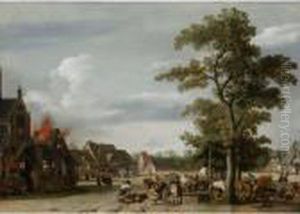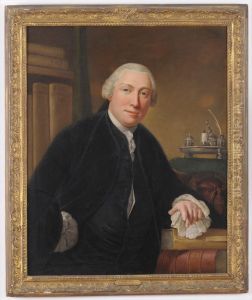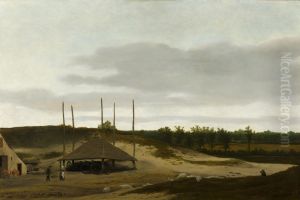Pieter Post Paintings
Pieter Post was a prominent Dutch architect, painter, and printmaker, born in 1608 in Haarlem, Netherlands. He was one of the key figures in 17th-century Dutch architecture, playing a significant role in the development of Dutch Classicism, which was a blend of Renaissance and Baroque styles tailored to Dutch tastes and needs. Post’s architectural works are characterized by their innovative use of classical elements, symmetry, and proportion, which were revolutionary in the context of Dutch architecture at the time.
Post initially trained as a painter and studied under the tutelage of the esteemed Haarlem painter Frans Hals. However, his career took a significant turn when he started collaborating with his brother-in-law and renowned architect Jacob van Campen. One of their first major projects was the design and construction of the Mauritshuis in The Hague, which is considered one of the masterpieces of Dutch classical architecture. This project marked Post as a leading architect of his time and laid the foundation for his future works.
Throughout his career, Pieter Post was responsible for designing a number of important buildings in the Netherlands, including the Huis ten Bosch, which served as a residence for the House of Orange, and parts of the city palace Noordeinde Palace in The Hague. He was also involved in the design and construction of several city halls and churches, showcasing his versatility and innovative approach to both public and private architecture.
Post’s influence extended beyond architecture; he was also involved in urban planning and the design of public spaces, contributing to the development of the Dutch landscape and its urban environments. His works not only reflect the aesthetic and cultural values of the Dutch Golden Age but also signify a practical approach to architecture, emphasizing functionality and the use of space.
Pieter Post died in 1669, leaving behind a legacy that has had a lasting impact on Dutch architecture and design. His work remains a subject of study and admiration among architects and historians, symbolizing an important chapter in the history of European art and architecture.


